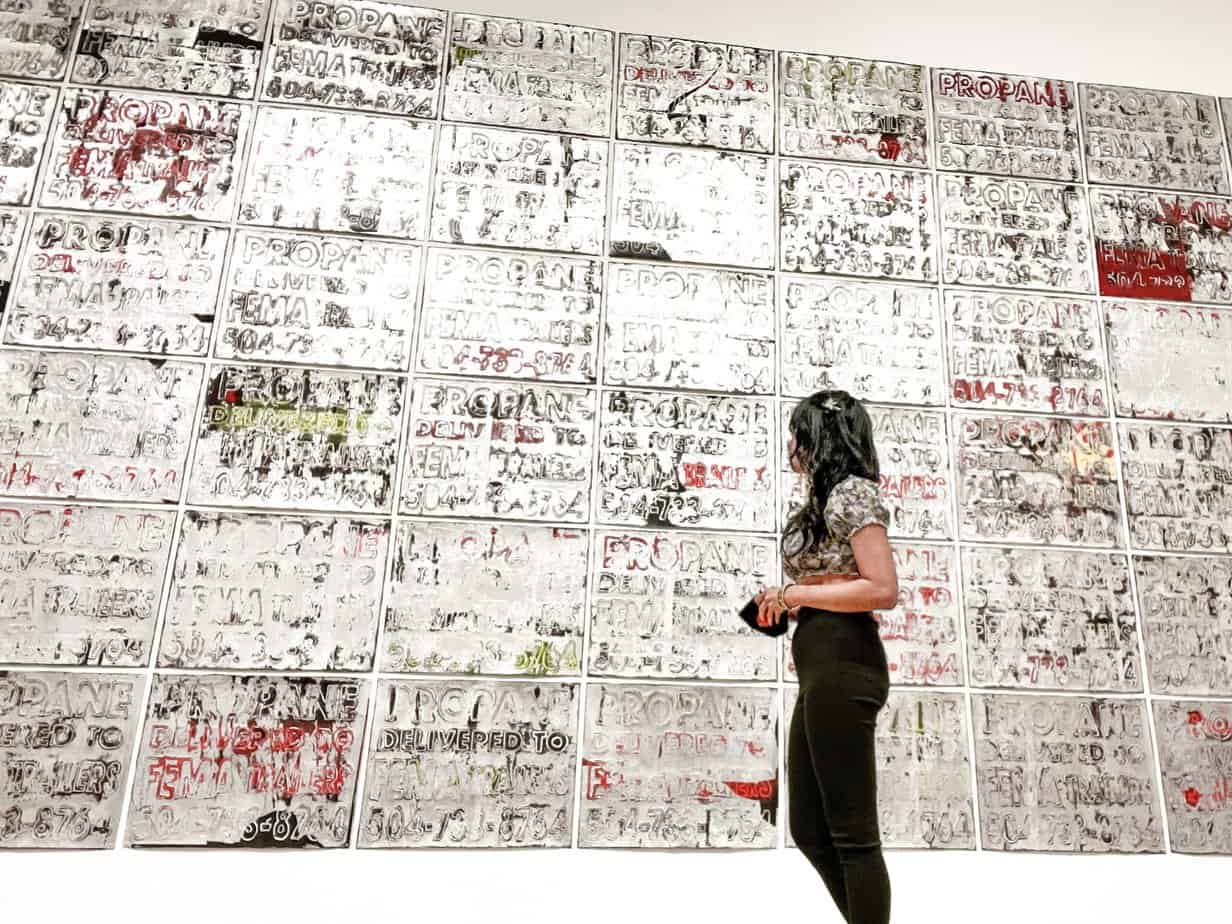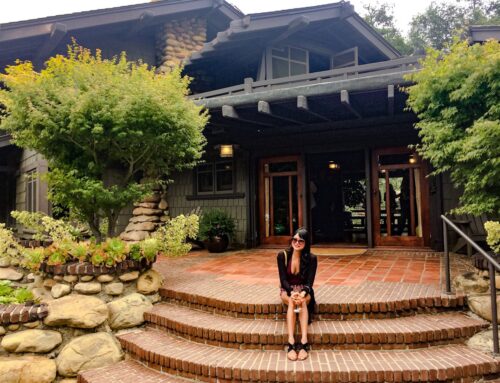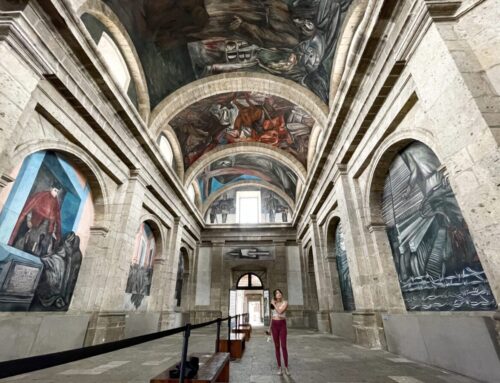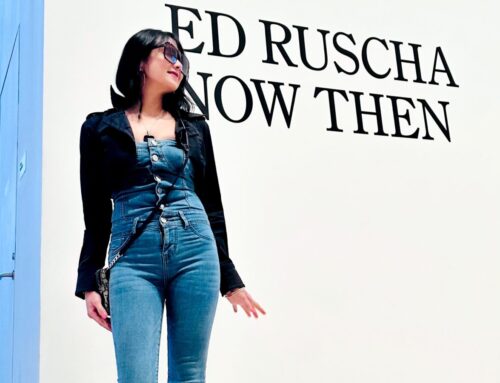Leimert Park
In the 1920s, William H. Leimert began to develop a community in South Los Angeles designed for upper-class families. LA Times then sponsored a “house beautiful” program that attracted several hundred thousand visitors. The 417-unit housing complex was soon filled but all white – like many neighborhoods in the country under racial segregation.
In California, housing covenants not only restricted owners from renting or selling their homes, but prevented any non-white person from even setting foot on their property, except, of course, for gardeners and servants.
The Supreme Court struck down these covenants in 1948, ruling that they violated the Fourteenth Amendment. An exodus of affluent African Americans soon flowed into Compton, West Adams, and Leimert Park. Protests and bombings led by the KKK terrorized the new residents. Even white owners who had agreed to sell their homes were harassed. While subsequent court rulings upheld the integration, predatory real estate agents scared the remaining white residents into selling their homes by telling them their children would soon mingle with other races. So homeowners sold their houses cheaply and fled west while the real estate agents resold the houses at higher profit margins.

Amendment 6, Art Basel 2014
Leimert Park soon became a predominantly Black neighborhood. Ella Fitzgerald, Ray Charles, and Tom Bradley were among its new residents. Mayor Bradley was instrumental in further integrating the city, attracting other successful and prominent African-Americans. When brothers Alonzo and Dale Davis opened the Brockman Gallery in 1967, artists started pouring in to work here and to exhibit. Jazz and blues clubs sprang up. Leimert Park became a model of urban planning, built with a central plaza surrounded by tree-lined streets, Spanish colonial and art deco homes, and well-tended gardens. It also boasted one of the best high schools in the city. It became known as the Black Greenwich Village and fostered a cultural renaissance akin to 1920s Harlem. This was the Leimert Park of Mark Bradford’s childhood.

Johnny the Jaguar/Johnny Buys Houses (2023), Hauser and Wirth
The Salon
But Bradford’s was a much more humble beginning. His single mother could only rent a small room for the two of them. During the day, she set up his crib in the back of the salon, where she worked as a hairdresser. He would grow up in this matriarchal society and later learn the same trade himself. He remembers this time and space as a safe haven for women from all walks of life because it became one for him too. These complex and brave women affected and inspired how Bradford would face the world later in life.
After high school, he made no plans for college and spent the next ten years traveling instead. In Europe, he spent days in museums and nights at parties. This time was his first exposure to Abstract Expressionism, the American art that had emerged out of New York City. When he was 30, he decided to return to Los Angeles and enroll at CalArts, the famed conceptual art school where many artists and actors, such as Ed Harris, also hailed from. He said it was because art classes were the only ones he could get through in school. His master’s degree would come with a debt of $150,000.
How do you start an art practice afterward with no money? Paint tubes, canvases and art materials were expensive. All he could do was go back to working at the beauty salon for a living, all the while dodging the bill collectors calling on the wall-mounted pay phone. Ironically, this is how and where his art began.

Across 110th Street (2008), The Broad
Endpapers
Endpapers are these small translucent rectangular sheets used for perming hair, particularly the Jheri curls of the 1980s. There were 1,000 pieces in a box that cost 50 cents. He started to play with the edges, singeing them with a blowtorch to create contrast before laying them on cheap, secondhand sheets he bought at Goodwill. Sometimes, he used leftover hair dye for color. The results were these overlapping grids burnt on the edges. He gave them heady titles tinged with even heavier social commentaries.
Enter and Exit the New Negro – an ode to the 1925 Alaine Locke anthology that highlighted the art and literature of the Harlem Renaissance. Smokey – a reference both to the end papers he used and Motown music. The Devil is Beating His Wife – an old Southern expression used by the women in the salon meaning rain on a sunny day. Disappear Like a Dope Fiend – alluding to the crack epidemic ravaging Los Angeles at that time. Strawberry – the slang term for a sex worker who exchanged services for drugs. And Los Moscos – a derogatory term for migrant workers who try to find work by the day. This canvas of twinkling yellow over a black field is meant to signify the bright lights of a city built on the backs of those desperately working out of sight. To the viewer, it evokes the aerial view of landing by air in the city at night. The works are astonishing – abstract expressionism layered over with so much social meaning.

Los Moscos (2004), Tate Modern
When legendary curator Thelma Golden was searching out artists in 2001, she came to Bradford’s studio. Filled with paintings, it was what she called a fully-realized body of work. They were beyond impressive. She included him in Harlem museum’s Freestyle show, cementing Bradford’s renown as an artist.
Deep Blue
The 1965 Watts Riots were caused by long-standing racial tensions. Proposition 14 overturned the Fair Housing Act, and there was rampant housing discrimination. A newly militarized LAPD was seen as being increasingly brutal in the African American and Latino neighborhoods.
On the evening of August 11, 1965, a traffic stop quickly escalated as crowds formed and clashed with the police. Over the next five days, 16,000 police and National Guardsmen were called to quell the riots. But there were already 30,000 citizens fighting in the streets – hundreds of buildings burned down, causing over $40 million in damages. And the deteriorating city of Watts was further neglected in its non-recovery. In the 80s and 90s, Watts became part of a battleground among different gangs.
In Deep Blue, Bradford maps out the buildings destroyed in the riots. Measuring 12’ by 50’, it lays out a city grid slashed in deep cuts with mounds of colored paper mimicking pins on a travel map. The work is monumental in emotion and scale.

Deep Blue (2018), The Broad
Helter Skelter
The Manson murders are remembered as drug-fueled cultish crimes. But Manson was actually a lifelong white supremacist who, amidst The Civil Rights Movement and race riots of the 1960s, became increasingly paranoid that it was a race war white people would lose. Manson had planned to take his followers underground and emerge later to defeat the new Black leaders. The murders were meant to frame Black Panthers leaders and incite a civil war.
Obviously, it was a failed plan and prophecy. Just as Charles Manson was the quintessential failed musician turned cult leader, preying on unsuspecting young women, many of who had come to Los Angeles to chase their own dreams. This part is a story as old as the city itself. But it’s the psychological complexity and racial undertones that Bradford would incorporate into the vast sweeping canvases of Helter Skelter I and Helter Skelter II. They are collages made of Hollywood posters, fashion brands, music releases, and bodies of bikini models, lacerated all over to reveal so many hidden layers. The end result is chaos.

Helter Skelter I(2007), The Broad
Grim Sleeper Murders
Between 1984 and 1988, there were 15 unsolved serial murders of black women. The killers were targeting sex workers and chronic drug users. Most of them remained unsolved for years, even amidst public outcry that the police were slow to act because the victims were poor and Black and women.
It wasn’t until 2010 after additional victims surfaced that the culprit, Lonnie Franklin, was arrested. He was dubbed the Grim Sleeper for seemingly taking a hiatus between 1988 and 2007. He was tried for ten murders before 1998 and six more after 2007, although it’s possible that there were more victims who were never found. Among the evidence collected at his home were over 1,000 photos of unidentified black women Franklin had seemingly taken. Some were photographed unconscious and most of them were naked.
The LAPD posted some of their faces on 47 billboards across the city because they wanted to collect more information. One was right outside Bradford’s studio, and he was mortified that what they resembled were “Wanted” posters, as if it was the women who were being apprehended. “They didn’t know who these women are, but they took their bodies. And the only reason why there was no outcry is because they’re Black.”
These were victims who were being made to look like criminals. And this was ten years before “shaming the victim” even made it to our lexicon. It took some campaigning but Bradford was able to get the billboards taken down. He kept them and turned them to art, obscuring all their faces, but keeping some of the signage highlighting they were victims. Four panels were exhibited at the Istanbul Biennale.

Scorched Earth (2006), The Broad
Merchant Posters
In the wake of the 1992 L.A. riots after the Rodney King trial, burned houses and buildings were boarded up. Nothing was rebuilt in the poorest part of the city, and those plywood spaces became neighborhood billboards. Layers and layers of advertising posters were plastered everywhere. Bradford started to collect them. He was unsure of what he would do with them but was fascinated by the various things they advertised – quick cash for homes, green cards, credits and loans, home services, and prison phone minutes. These were the needs of the most disenfranchised. “Erase your criminal history. Free Legal Fair. If something like that is on a telephone pole, you know that the judicial system is failing this community. And it’s very hard to get a job even if it’s a small infraction.”

150 Portrait Tone (2017), LACMA
Layers of posters peeled back would reveal a sign and phone number for “Financial Freedom” under “Divorcio Y Custodia” under “Are you losing your home?” There were also posters for live underground shows and music clubs, beauty services, basketball teams, auto parts, and job ads. This was old-school neighborhood word-of-mouth advertising. At this time, South Central had gone from being predominantly Black to a mix of Black, Hispanic and Korean. Public space was again changed by an emerging street merchant culture – food vendors and advertising – directed at these new niche, immigrant communities. And during the 2008 financial crisis, people lost their homes. These posters tell the story.
Bradford coined the term “merchant posters” and made art out of them over the next two decades. True to his beginning, he loved the idea of repurposing these materials rather than using store-bought art supplies. And these were literally a written history of the city. Records no one else ever thought to preserve. “These signs clearly speak to the immediate needs of the people passing by them every day. People in crisis. It’s not like popular culture, where it’s all globalized. This is very localized, and the needs change rapidly.”
The Merchant Posters series pay homage to his own humble beginning, as a hairdresser on the streets of South Central. And although he has come a long way, representing the U.S. at the 2017 Venice Biennale and becoming among the most expensive living Black artists – Helter Skelter I was sold for $12 million, second only to Kerry James Marshall – today, his office and studio still occupy that same space in the city where his mother’s salon had once been.

Merchant Posters, SFMoma









